
above-the-head (abstract)
What is the influence of technology on humans, in a general sense? The above-the-head quadrant comprises general ideas about the relationship between humans and technology. A summary of philosophical thinking about technology shows a progression of three grand visions.
The exemplary effects are utopian technology, dystopian technology, and ambivalent technology.
These ideas are general and abstract; there is no tangible point of contact. The are not so much concepts that can be applied in design. However these ideas often figure in controversies about technology. This quadrant is helpful for ethical reflection and discussion.
utopian technology
From the Enlightenment up to well into the twentieth century the dominant conception of technology as a whole was very positive, sometimes utopian. Technology was seen as a panacea, ready and waiting to be discovered and developed by humanity. The role of technology as a necessary mediator of human progress was first systematically developed by Kapp (1877). Applying Hegel’s dialectical scheme to the relation between humans and technology, he found that humans gain self-understanding only after they have reproduced themselves in technological extensions. The skeleton became to be seen as a mechanism; the heart was defined as a pump; and nowadays the brain is compared to a computer.
Technical Utopias

Utopias are plans for a radically better place, a literary genre started by Thomas Moore. Francis Bacon’s New Atlantis is the first of technical utopias. Jeremy Bentham’s Panopticon and the Chamber of Inventions by Saint Simon are examples of technical utopias as the basis for political action.
Modernistic city planning
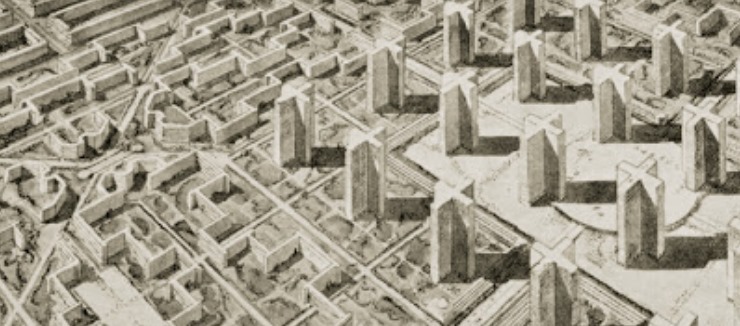
Modernistic city planning provides some of the best examples of design driven by utopian goals of radical social change. (Ville Radieuse, Le Corbusier).
Transhumanism & singularity
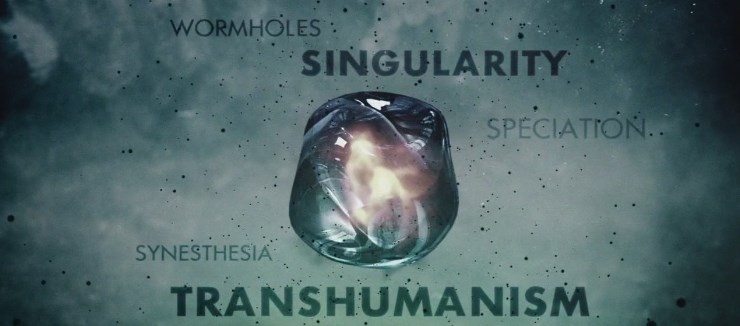
A clear contemporary expression of the utopian vision on technology are ideas such as transhumanism and technological singularity. The time is near that humanity will by technical enhancement enter a new phase of its evolution, surpass its poor situation and biological roots.
Houellebecq's clone utopia
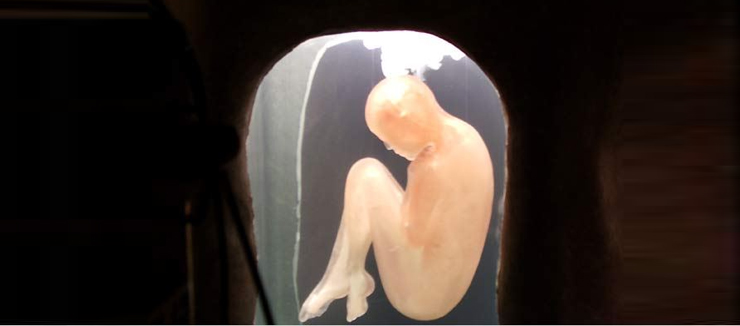
A contemporary example of a utopian novel is The possibility of an Island by Michel Houllebecq. Technical progress has made possible reproduction by cloning. Humans can renew their bodies and live on forever.
universal association
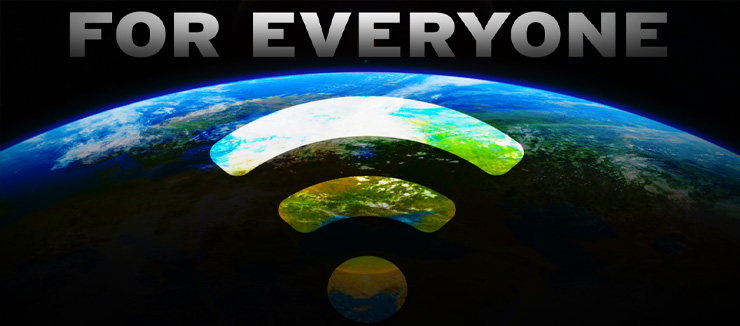
Network technologies, most recently the Internet, have given rise to a utopian beliefs. One such utopian promise of the Internet is universal association between all people. Another is ubiquitous access to all knowledge for everybody.
dystopian technology
In the course of the twentieth century the belief in the miracles of technology was undermined by the advent of the nuclear bomb, environmental problems, and oppressing bureaucracy. The shocking discovery was that technological progress comes at a price. There is no technology that simply liberates people, but technology appeared to make people dependent and it seemed hard to keep technical developments under control. The overall conception of technology reversed from utopian to dystopian (cf. Achterhuis 1998). The dystopian exemplary mediation effect is that all technology is likely to accumulate into a system that dominates humanity.
Nuclear bomb

With the nuclear bomb a technology has been contrived that is capable of destroying its maker. This is an emblematic technology for the dystopian conception of what technology can do to humanity.
Mechanization takes command
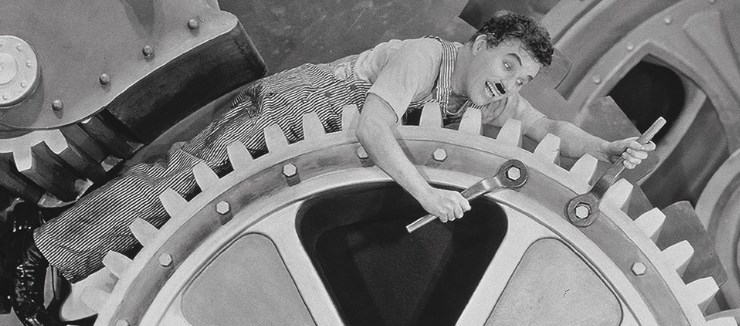
In the movie Modern Times by Charlie Chaplin, he plays himself a factory worker who becomes a victim of the machine. He cannot follow the rhythm and is than swallowed. Design historian Giedeon gave this idea a poignant expression: mechanization takes command.
Panopticism
The Panopticon prison design by Jeremy Bentham was a utopian vision on all-visibility and the disappearance of irrationality and vice. The utopian vision of Bentham has for many people today, in the digital age, collapsed into a dystopian fear for continuous surveillance and control.
Failed urbanism

City planning of the twentieth century was often inspired very much by socialist ideas. In many cases the dreamed of perfect societies were not realized but the new cities rapidly became centers of crime, poverty and segregation. Infamous is the example of Pruitt-Igoe, built in the 1950’s but demolished in the mid-1970s.
Waste & environment

In the course of the twentieth century the downside of industrial production has become clear. The consumer society not simply brings improvement for everybody but along with it waste and the environmental crisis. (Manufactured Landscapes, Edward Burtinsky photography)
ambivalent technology
Beyond utopian belief and dystopian despair (cf. Achterhuis 1998) in contemporary “empirical”, or “practice oriented” philosophy of technology the idea has come to prevail that humanity has long been knitted together with technologies: hand-axe, clothing, housing, cars, smart phones. We cannot possibly exist without technology. Many people may have a nostalgic longing for the material culture and technologies from their childhood or the time of their parents and grandparents. But that’s still very different from becoming independent, free of technology.
Originary technicity

In the art work “Building Blocks” by Kumi Yamashita a shadow renders a human figure. However, the shadow does not originate from a human being but from children’s building block. This nicely expresses the insight in the philosophy of technology that the history of human existence is bound up with technology. Originary technicity, according to Stiegler; artificial by nature, so Plessner.
Intimacy

“Intimacy” is a dress that becomes transparent when the wearer is aroused. If not practical for every day life, it is a fascinating artistic exploration by Daan Roosegaarde of new modes of interaction between humans and technology.
Post-industrielle Spontanvegetation

“Post-industrielle Spontanvegetation” is the poetic phrasing used for the phenomenon in the German Ruhrgebiet where nature has reinvested deserted factories.
Cyborg
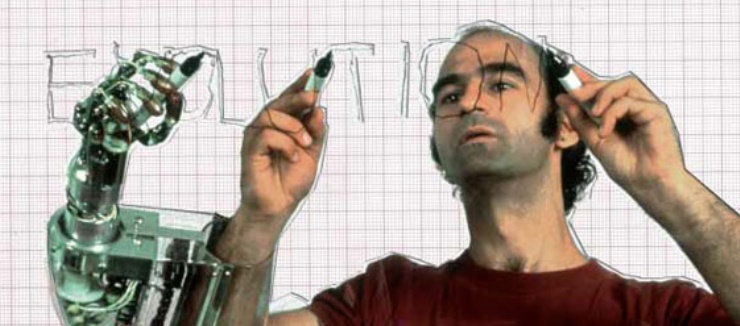
The term cyborg is a combination of cybernetics and organism. The artist Stelarc suggests and/or investigates if this is the future evolution of humans.
Endless mediation

Every theory has its technical a priori, asserted Friedrich Kittler. He noted that Michel Foucault, who was a pioneer of thinking about material conditions, could or did not see how his own approach of an “archeology of knowledge” was itself the result of his research in libraries. (photo credit: timetrax23)
before-the-eye (cognitive)
If technologies address our cognition, this can be termed before-the-eye interaction. Products then transport signs that informs our decision making faculty. The experience of conscious use of technology largely falls in this quadrant. The eye symbolizes this mode, but other senses can act as information receivers too.
Three exemplary effects before-the-eye are: guidance, persuasion, and image.
The mechanisms collected in this quadrants are drawn from the intersection of psychology and design. They can be applied in the design of products and this is actually been done. Think of design for usability, branding, and social design.
guidance
One type of technical mediation in the before-the-eye quadrant is guidance. Products give users suggestions about possible use. A well-known concept that helps understanding impacts on behavior through cognitive suggestion is affordance. Donald Norman, a pioneering scholar in cognitive ergonomics, took the notion of affordance from the field of environmental psychology and elaborated it in the context of design. Affordances, in the applied sense of Norman, are the use action possibilities that users recognize when they perceive products (Norman 1988). The concept of affordance helps to analyze how buttons, grips, displays, meters, ribs, etcetera, all physical features, are cognitively associated with possible actions, uses.
Remote control
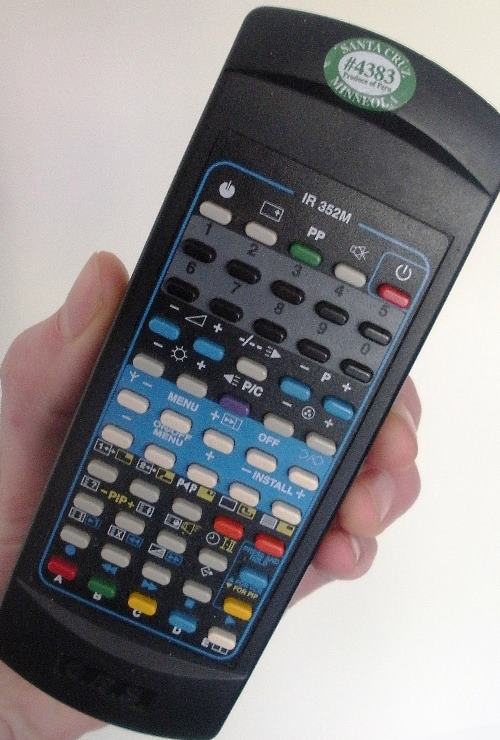
This universal remote control has way too many buttons. It was even unclear what was the front side. This problem was solved by putting the sticker from an apple (in the spirit of Donald Norman’s calls to apply “affordances” in design).
Car door handle

Car door handles are easy to use. According to usability expert Donald Norman users will easily understand what action of use this design affords. The appearance of the grip coincides with their way of handling, namely by extending the gripping gesture.
Paris bicycle lane
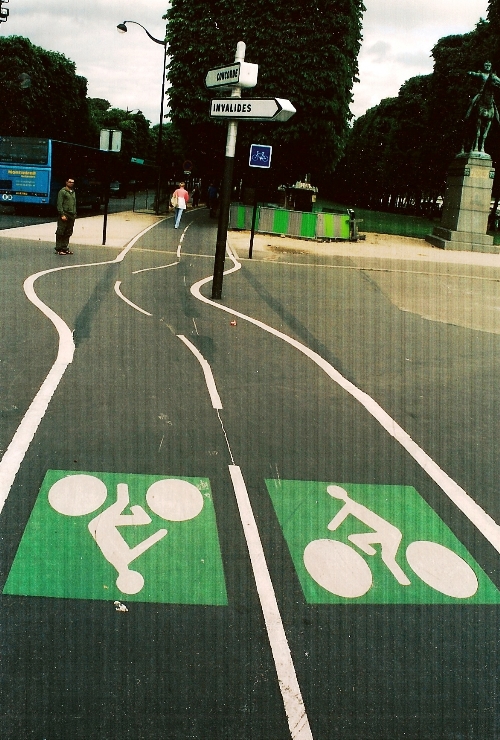
If the curve in this bike lane makes you smile it may also make you wonder to what extent all our movements and actions actually follow lines and obstacles in our environment.
Walking strips for the blind
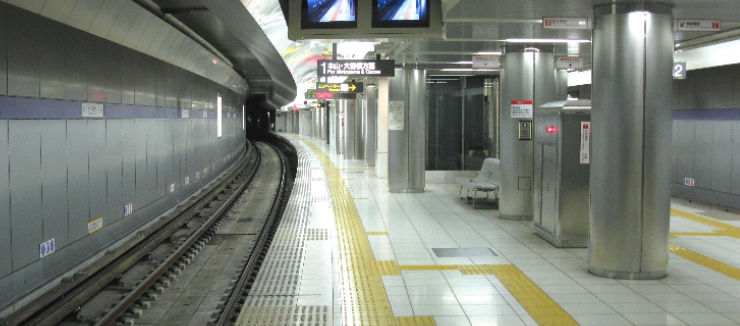
A very clear example of how technology can guide and give directions. Also the example makes clear that whereas the eye is the dominant sense for reading information other senses can collect info too.
retractable bollard
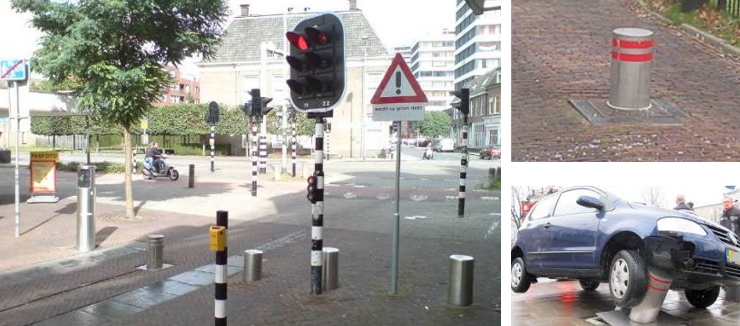
Instead of guiding, products may also misguide users. This retractable traffic bollard does not make sufficiently clear to people when the pole is coming up. Recurring accidents are the result.
persuasion
Persuasion is another type of influence through cognitive interaction. Compared to guidance, persuasion can be characterized as a stronger type of influence on behavior In this case the user guiding effect goes beyond supporting existing, conscious goals: it reminds people of values or intends to teach new ones. This effect was elaborated by B.J. Fogg (2003) with the concept of persuasive technology. Central in Fogg’s approach is the captivation of attention (taken from rhetorics). Persuasion thus focuses on effects that work cognitively, by addressing user’s decision making processes.
Persuading speedometer
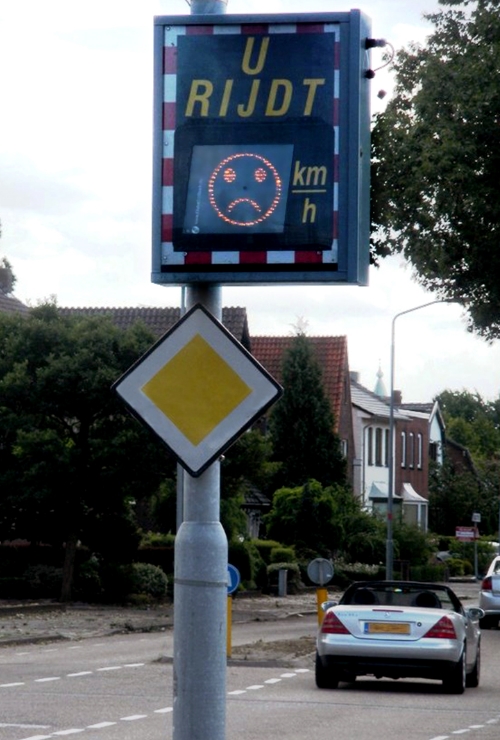
The speedometer does not give neutral feedback about speed, but teaches a lesson: pay respect to the maximum speed here!
escalator teaches a lesson
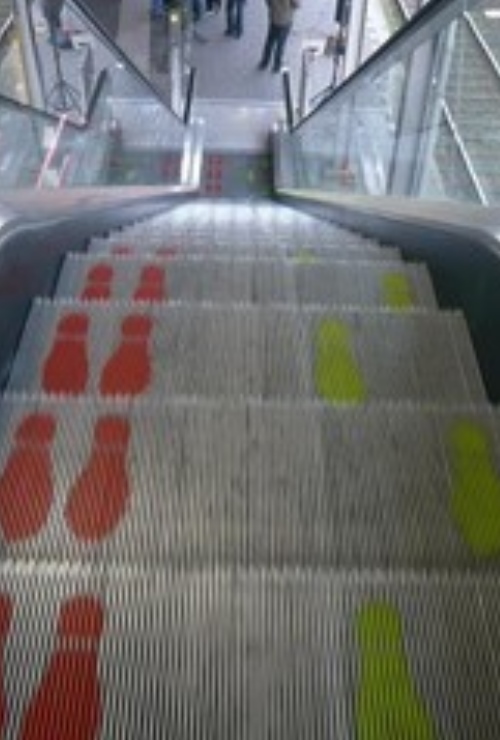
This escalator wants to teach a lesson: those who want to stand still should keep to the right, and those who want to walk are able to do so on the left.
Choice and nudge

Technology can “nudge” people. According to Thaler & Sunstein technologies prestructure our choices. If this is so, they ask, what does that imply for the display of food in a school cafeteria? Do we want to nudge towards the choice of fruit or can the canteen put snacks in the front?
Piano Stairs

After transforming the stairs in a Swedish metro station into a piano 66% more of the people chose to take the stairs. (see on you tube).
persuasion to save energy

We like the pattern to be closed which can be done by switching the light of. The AWARE light switch was designed in an attempt to raise awareness of energy use and stimulate saving of electricity
image
Products can contribute to fashioning people as they identify themselves with and through technologies. People choose products that fit their image, and thereby those products help to shape and express the identity, the self of people. This exemplary mediation effect can best be categorized in the cognitive interaction quadrant. Daniel Miller’s approach of Material Culture Studies, offers the best example of technical mediation as identification with and through technologies. Miller claims, that by using technology people express themselves. They do not just represent what was already there, for in the act and interaction with technology they also create themselves. He asserts that “objects make us, in the very same process that we make them” (Miller 2010, 60).
Pimped car
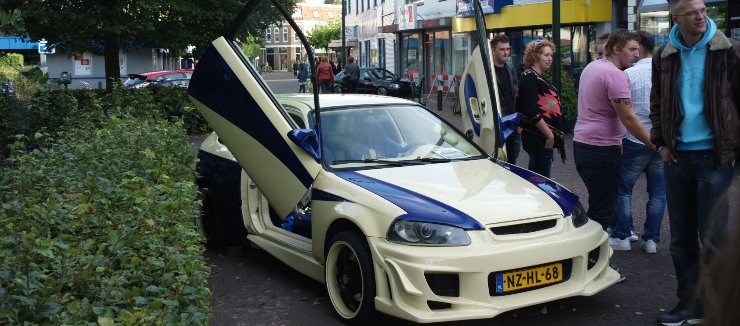
You may identify yourself with products that match your style, but your very identity may also be shaped in the process. Anthropologist Daniel Miller (2010) provides an example from Trinidad, where in the 1980’s car tuning was very popular, and people were often known and referred to by their cars (Miller 2010, 104).
Customization
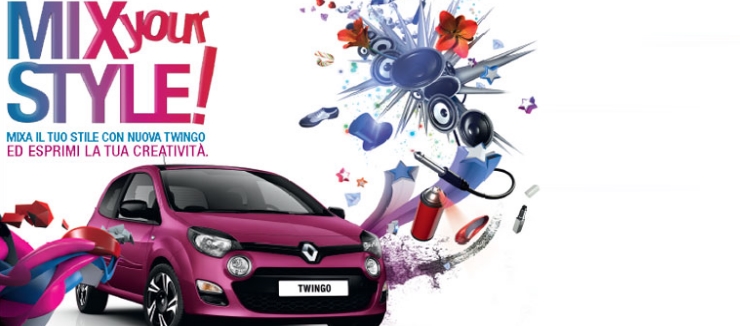
Customize your car to your own style, was the message of a recent publicity campaign. Technology can match your style and your way of being, so that you can identify as much as possible with the products you use. Since a few decades lifestyle has become an important category in marketing and design.
Design of a lifestyle

Publicity employs the figure of identification. Renzo Rosso, owner of Diesel jeans, said: “We don’t sell a product, we sell a style of life. I think we have created a movement… The Diesel concept is everything. It’s the way to live, it’s the way to wear, it’s the way to do something”.
Gendered style
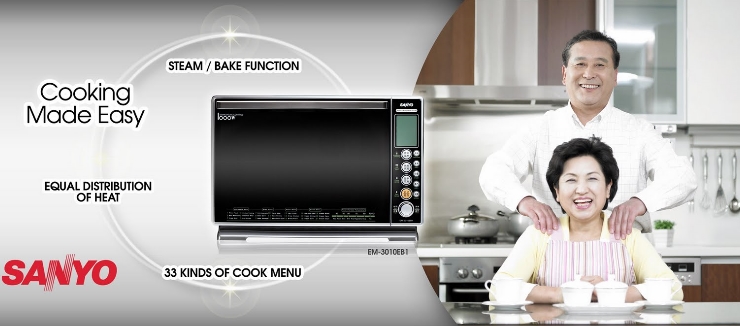
The first microwaves were dark colored and later they became white. This corresponds with a change of target group for marketing: first as “toys for boys” and later as kitchen appliances. An example from gender studies example (Cockburn & Omrod).
Product as symbol

The symbolic meaning of a product can also be used for helping people to understand a product and guide their behavior. The cigarette form makes clear here is an astray for cigarettes at the entrance of a shop.
behind-the-back (environment)
Behind-the-back designates influences of technology which work indirectly, not by direct contact before-the-eye or to-the-hand, but via the environment. In this quadrant one finds in particular historical geographical, and sociological insights about technology.
The three exemplary effects are side effects, background conditions, and technical determinism.
Because this type of influence is indirect en because the environment is extended without a border it is impossible to simply apply behind-the-back effects. Acknowledgment of the circumstances makes it possible to adapt products. And to some degree one can design products together with services or infrastructure.
side effects
Technologies very often have side effects. A product designed for a with certain functionality may perform this function well at first glance. But in the second instance the advantages with respect to the the primary function may be undone by disadvantages on another on another plane.
In the case of functional side effects the success a product bites its own tale and the primary function is nullified. The side effects may also attack on a completely different terrain than the that of the intended function: ecological side effects or social side effects.
overheating
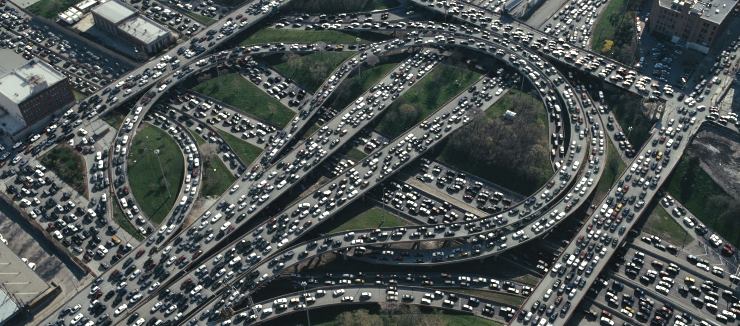
While the car is invented for fast transportation, when everybody has a car the technology gets overheated, or a reversal effect occurs: to many cars make a traffic jam (Marshall McLuhan). This effect is not the result of our direct interaction with a car, but is an indirect system effect, behind-our-backs.
jogging effect

Now everybody has a car, and would be relieved of having to walk, many people start jogging, noted Regis Debray. Ease of transport and longing for fitness appear as two conflicting trends.
rebound effect

Low-energy light bulbs are intended for saving energy and the environment. However, the effect is largely undone if we use apply more more artificial light.
Groningen earthquakes

In the Groningen region in the Netherlands the extraction of gas from the soil of the past decades now confronts the inhabitants with severe damage and anxiety because of frequent (semi-heavy) earthquakes.
cockpit lock

To prevent terrorists to enter the cockpit of planes the doors are locked. The severe downside is that in the case of a suicidal pilot in a German Wing flight there was now way of preventing the plane to crash in the French alps.
background conditions
Often the successful functioning of a product is dependent of background conditions. A product may require an infrastructure for maintenance or provisioning. Or the operation requires prescience and skills.
Mapping the context can therefore help to improve to understand problems with the use and acceptations of products. Sometimes boundary conditions can be (to some degree) be designed together with a product. Think of system innovation or combined design of product and services.
glasses & printing press

The printing press changed our world. It advanced literacy for everybody. But this would have been impossible without glasses, another invention of the late middle ages (so the historian of technology Friedel). Glasses are a background condition for print and reading.
infrastructure

A technical product often cannot function on its own but requires a supportive infrastructure. Cars need an infrastructure of gas stations. And for the electric car to become a success a new infrastructure with charge stations is needed.
central heating

Although this cat benefits from the radiator directly, most of the time the central heating remains in the background (Don Ihde). Still, as a background condition the system is all important. It allows a bearable, even comfortable life in cold areas.
blue light

In an environment of blue light one can no longer recognize blue. Applied in toilets this is a measure against using drugs by needle. Applying the needle requires white light, and turning the environment blue takes away a possibility.
required knowledge
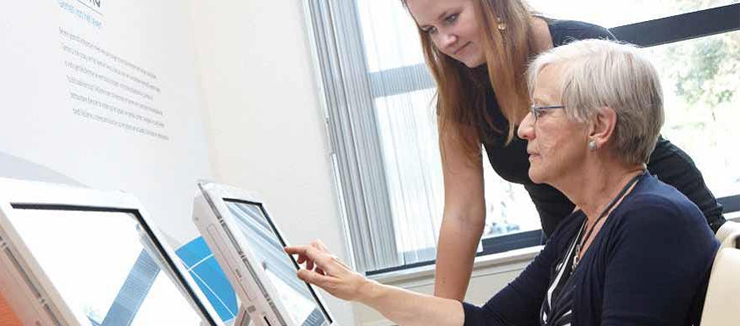
For succesfull implementation of technologies not only material but also immaterial preconditions must be fulfilled. A lack of required knowledge, skills, or fiancial means may hinder succesfull product use.
technical determinism
If one looks at history, than the bigger the timespan becomes, the smaller the influence of individual people seems to matter. This raises the question of historical determinism.
Technical determinism concerns the the determination of history by material and technical circumstances. Historians and geographers show which conditions have directed the course of history and in what direction. Politicians and economists address the question if the conditions may be changed as a way to influence historical developments. A philosophical question is if there is room for freedom in a determined world (see above-the-head).
need for mobile phone
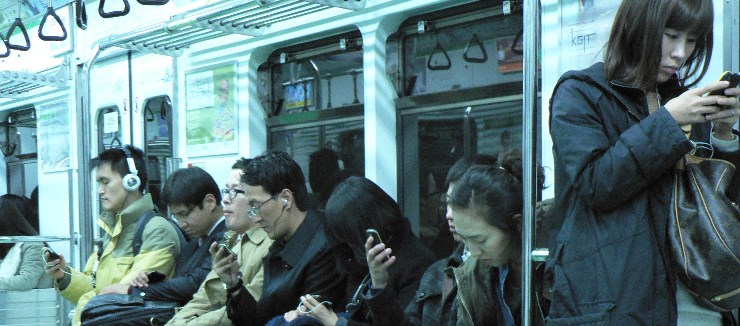
Interviews from 1998 on Dutch television show that people did not think there was a need for mobile phones. Today this has totally changed: most people cannot imagine a life without anymore (zie op youtube) (cf. Vonk 2014).
ultrasound and the value of life

New imaging technologies for prenatal resarch unintendedly but inevitably challenge our ideas about the value of unborn life (cf. Verbeek 2014). Are we going to intervene and select more? will our values and norms change? What do we think of that?
one best way

Perhaps humans are not creative inventors but only serve to assist in the realisation of a given technical logic (Dessauer). For example the development from tool to machine to automaton (Coolen), or Ellul’s claim that there is “one best way” in technology (referring to Taylor’s scientific management).
socio-technical trends

Websites took over function and design from printed media. Then, in return, newspapers imitated websites by adopting the tabloid format. There is interaction between what is technically possible and what people expect. Compare also Loewy’s design principle: Most Advanced, Yet Accetable.
historical materialism

Karl Marx famously analyzed how the material-economic circumstances determine history: historical materialism. Marx considered a revolution to break the capitalist control of the means of production as the way to accelerate historical change.
to-the-hand (physical)
The most obvious effects of technology on humans are direct influences on the human body and gestures. The decision making faculty is short cut. To-the-hand interaction proceeds by bodily contact or affection of the senses. The hand is used to symbolize this.
The three exemplary effects are: coercion, embodied technology, and subliminal affect.
To design is to throw obstacles in other people’s way, said Vilém Flusser. Indeed, fences and gates determine where people can and cannot go. Coercive technology often decreases freedom and user experience. But it may also afford a very natural interaction. Think of operation by touch and gestures.
coercion
A concept that helps exploring effects of more or less coercive physical influences, is delegation as elaborated by Latour (1992). Many everyday products enforce a certain behavior on humans. Latour wittily discusses a speed bumps making car drivers slow down, door grooms ensuring that doors are being closed, and hotel keys with heavy key fob disciplining hotel guests to leave the keys at the hotel desk. Technologies carry scripts with them, guiding users it like a movie script helps actors. When products guide humans, Latour thinks this implies the delegation of morality from people to products.
Speed bump
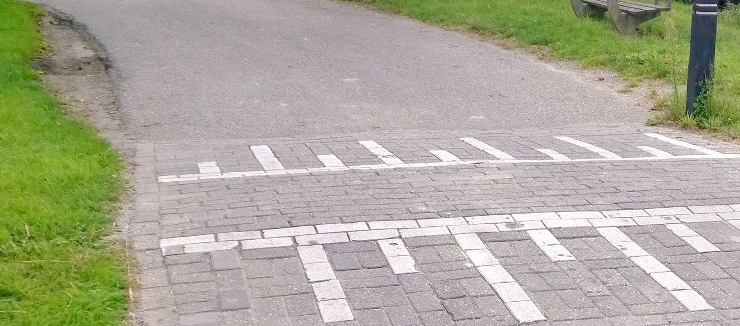
A clear example of technology that by physical obstruction coerces humans behavior is the speed bump. Anthropologist and philosopher Bruno Latour analyses that such a case morality is delegated to technology. The decision making process is short cut.
Shopping cart with anti-theft lock

These anti theft shopping carts have a lock at the left front wheel that is activated when the cart passes the red dotted line. A clear example delegated morality (Bruno Latour) or moralizing devices (Hans Achterhuis).
Enforced watching to the left
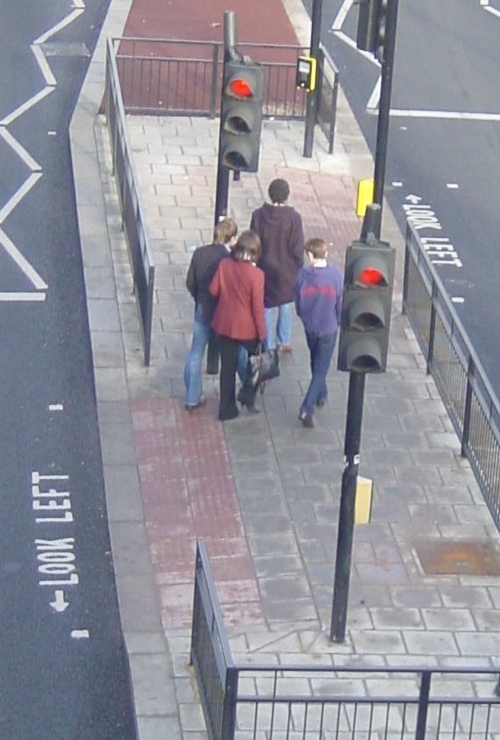
This fence makes people walk in a S-curve and thereby enforces watching to the left. In London this important for people from the continent, who are not accustomed to cars driving on the left of the road.
Machine operation safety

Enforced behavior is applied in design for safety with god reason. Here a dangerous machine must be operated with two hands, so that one cannot cut one hand with one’s other hand.
Long Island low overpasses

A famous example of coercive technology comes from philosopher Langdon Winner. He recounts that the overpasses on Long Island were designed low to keep away buses and poor people and thus were a vehicle for a racist ideology. (photo credit: P.-P. Verbeek)
embodied technology
Products can coerce physical gestures, but they can also structure gestural routines in more subtle ways. Products such as pencils or a bikes are used without much thought. And if one does think about it, they are rather experienced as comfortably integrated and empowering, than as constraining. Such products are embodied (Merleau-Ponty; Ihde). Practice and discipline are necassary to attain this natural experience , even if this is often forgotten afterwards (Foucault).
Embodied technologies
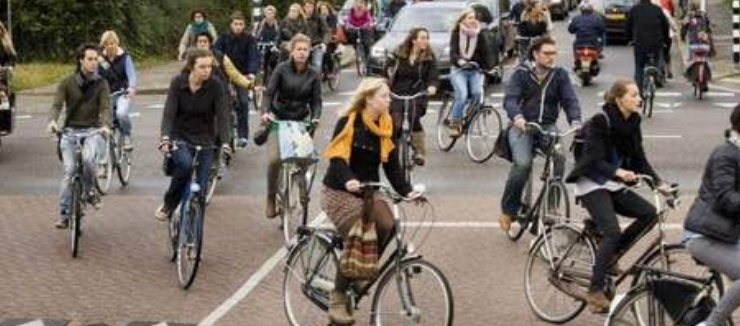
Technologies that you can handle without thinking, as if they were your own bodily members, are said to have become embodied. Good examples are a pencil or a bike. They structure one’s action, but this does not feel like coercion.
Playing a musical instrument

Musical instruments are also embodied. Playing music with an instrument feels as an enrichment, not as confinement.
Ballet shoes

Ballet shoes, points, when the technique is mastered, enable to walk on one’s toes: an activity impossible without this embodied technical product.
Marching army

Embodied technologies are not experienced as coercive. A coercive element of embodiment become visible by thinking back to the training necessary to produce the tuning of body and technology.
Driving a car (simulator)
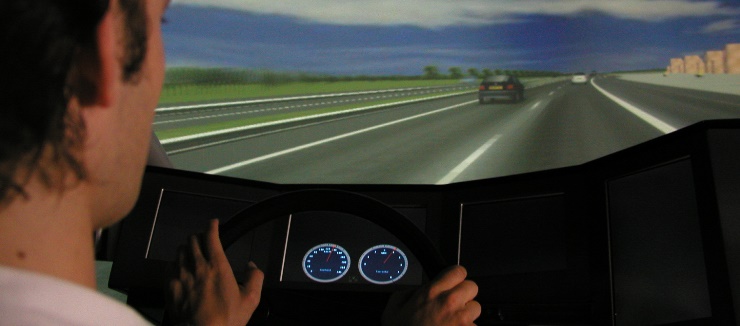
In this driving simulator tests were conducted to find out how a smart lane change assistant should communicate with the driver (Martijn Tideman). One option was a nudge from the steering wheel. (photo credit: M. Tideman)
subliminal affect
Subliminal affect denotes behavior steering effects of technology (such as attraction or dislike) by smells, noise or by images that works subconscious. Even if there is no physical contact, this effect is still best categorized in the to the-hand-quadrant. There is resemblance with interaction before-the-eye in the sense that cues are conveyed. Unlike interaction in the before-the-eye quadrant conscious cognition is however not involved. Instead, affection occurs by subliminal tuning to the triggers from the environment. There is also resemblance with indirect behind-the-back influences, because direct interaction is hardly perceived.
supermarket coffee

The smell of fresh coffee enhances hospitality in a supermarket. Shop managers hope of course that it also brings people in the mood to spend some money.
lovely smell of bread in the supermarket

Baking fresh bread in a supermarket enhances the ambiance, and the readiness for shopping?
mosquito
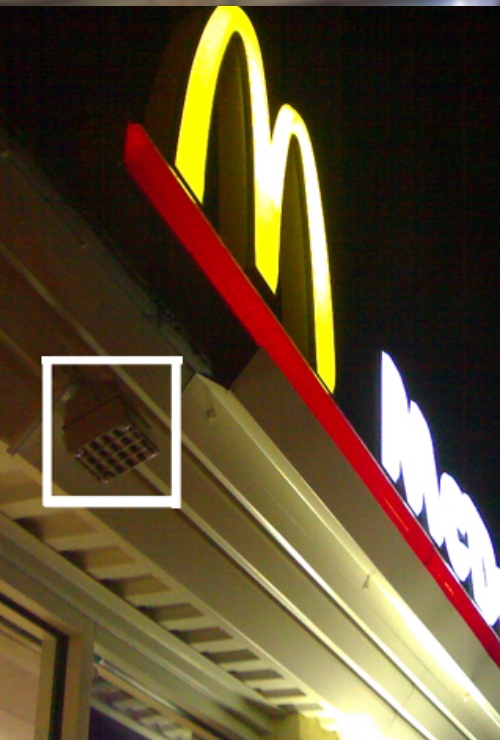
The Mosquito is a speaker that produces a high tone, so high that older people don’t hear it but young people do and find it irritating. The perfect method to ward of loitering teens.
hand dryer

These days in public toilets extra strong hand dryers are very common. The advantage is that hands get dry very fast. A disadvantage is that this comes with a frightening loud noise. (Besides, you have tu put your fingers in the devices just like you put paper in a shredder)
annoyingly bright lights
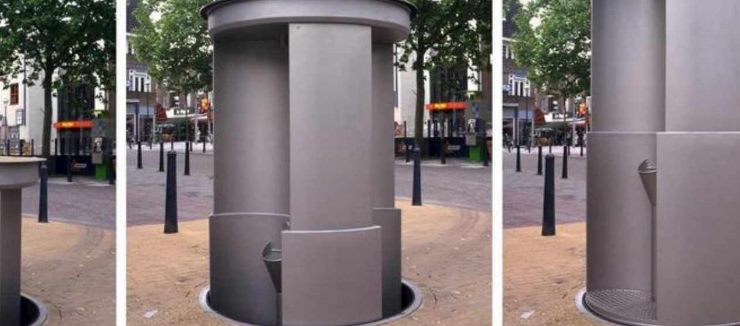
In the Dutch city of Enschede urionoirs raise from the soil at night. This is to avert that men urinate against the old church. Lamps in the pavement meant to shine a light on the church prove helpfull. They shine so bright that they hinder parking your bike. They defenitely also disencourage urinating close to the church.